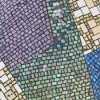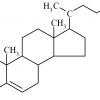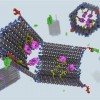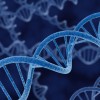Jumping genes in your brain?
 Mobile chunks of DNA that walk their way from one position in the genome to another may affect neurological diseases and could have subtle influences on normal brain function and behavior, according to a recent study in Nature.
Mobile chunks of DNA that walk their way from one position in the genome to another may affect neurological diseases and could have subtle influences on normal brain function and behavior, according to a recent study in Nature.
Alu is an example of a so-called “jumping gene” – a transposable DNA sequence that “reproduces” by copying itself and inserting into new locations throughout the genome. Alu elements are classified as SINEs, or Short INterspersed Elements. All Alus are approximately 300 bp in length and derive their name from a single recognition site for the restriction enzyme AluI located near the middle of the Alu element. Alus are also classified as retrotransposons, because they need a special enzyme (a reverse transcriptase) to produce mobile copies. However Alus are “defective transposons” as they depend on the enzymes of other transposons for mobility, like the best characterized retrotransposon family called L1, a Long INterspersed Element (LINE).
Once an Alu inserts at a chromosome locus, it can copy itself for transposition, but there is no evidence that it is ever excised or lost from a chromosome locus. So, each Alu insertion gets fixed through evolutionary time. Like genes, Alu insertions are inherited in a Mendelian fashion from parents to children.
First discovered in corn about 60 years ago by Nobel laureate Barbara McClintock of Cold Spring Harbor Laboratory, jumping genes are now known to make up more than 40 percent of the entire human genome and may play an important role in genome evolution by creating new mutations and gene combinations.
Until this recent study, L1 retrotransposition was assumed to take place during early development mainly in germ cells (ovaries and testes) and rarely in somatic tissues (non-sex cells). Now researchers from the Roslin Institute near Edinburgh, Scotland, have capaciously mapped retrotransposon insertion sites in the genomes of normal human brain cells.
The researchers used state-of-the-art DNA sequencing technology to identify retrotransposons in brain tissue samples taken at postmortem from three individuals who were healthy when alive and had no neurological disease, nor signs of abnormality in their brain tissue. Focusing on two regions—the hippocampus and caudate nucleus (that is also involved in memory)—they identified nearly 25,000 different sites for the three main retrotransposon families: L1, Alu and SVA.
The numbers are impressive: their analyses identified a total of 7,743 insertions of L1s in the hippocampus and caudate nucleus, areas that were known to show cell division after embryogenesis. They also found nearly 14,000 insertion sites for the Alu family, which has not been encountered before in the brain.
Interestingly each sample showed its own set of unique retrotransposition events, which meant each one had an individual mutagenesis background. According to the study, retrotransposons more likely to be integrated in genes that were expressed in the brain, perhaps because these genes are more susceptible, as their DNA is packaged in a more accessible way.
So what is the consequence when retrotransposons preferentially jump within genes that play key roles in normal brain function? They cause normal gene expression to shut down, disrupting normal gene function. Affected genes include those genes encoding receptors for the neurotransmitter dopamine and membrane transporters. Others integrated in tumor-suppressor genes, which are deleted in several different types of brain cancer. Jumping genes were also found within genes encoding regulatory proteins linked to psychiatric illnesses, such as schizophrenia and Alzheimer’s disease. As well as generating mutations by inserting themselves into and disrupting genes, retrotransposons can alter gene activity if inserted into adjacent regulatory regions of DNA. Such alterations can have a valuable or harmful outcome, without doubt a powerful tool driving evolution.
The researchers also reported that jumping genes were more active in the hippocampus compared to the caudate nucleus. This is highly interesting, because the hippocampus is known to be critical for memory and learning, and is thought to be one of the few parts of the brain that continues to produce new cells throughout life. Are jumping genes therefore involved in how we learn? Researchers are now beginning to investigate whether jumping genes help us adapt processing information through learning.
So when do jumping genes actually get mobile? It has to happen during the brain’s development because retrotransposition requires cell division. After early childhood this does not take place in the brain; new neurons are generated in the hippocampus from stem cells, through a process called neurogenesis. Retrotransposons then take the opportunity to jump randomly (!) into parts of the chromosome that have been opened up for DNA replication.
Once thought to be rare, these neural integration events actually take place surprisingly often. The analyses in this latest study suggested that most brain cells undergo an average of 80 L1 integration events! This means each neuron is likely subjected to a unique combination of insertions, leading to a “genomic plasticity” within populations of cells.
This research completely overturns the belief that the genetic make-up of brain cells remains static throughout life. It indicates that neuronal networks are constantly changing with each new experience as novelty and challenge both trigger neurogenesis. It may finally result in differences in brain function among individuals, even in genetically identical twins.
Further reading:
Video link about Alu elements and Autism.
Nature papers about L1 transposition in human neurons and the impact of Alus on human evolution.
| Print article | This entry was posted by Christine Marizzi on April 26, 2012 at 12:06 pm, and is filed under G2C Online. Follow any responses to this post through RSS 2.0. You can leave a response or trackback from your own site. |









